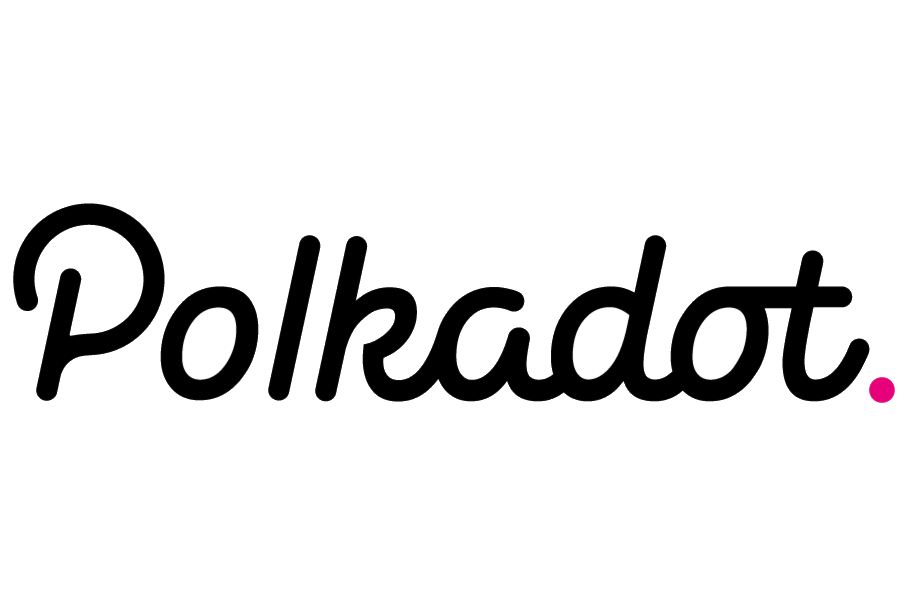Polkadot review: the great enabler
Polkadot might just have the best business model in crypto. But how does it stack up against the competition? Let’s find out.

Note: price information taken on 16th July 2021.
“There are only two ways to make money in business: one is to bundle. The other is to unbundle.”
Read enough about the future of tech and investing, and you’re bound to see that quote eventually.
It comes from Jim Barksdale, who was the president and CEO of Netscape from 1995 to 1999, when it merged with AOL.
Basically, the story of the internet – or at least the story of people making money from the internet – comes down to bundling and unbundling.
Take the music industry.
Before the internet, music was “bundled” together in an album. Sure, you could buy singles… but how many singles have you ever bought… and how many albums?
Then along comes the internet. Suddenly, you can share individual album tracks – for free – with other people all over the planet.
Of course, pretty soon this was made illegal and the file-sharing platforms were mostly disbanded.
But the genie was out of the lamp. Music was being “unbundled”.
Apple saw what was going on and seized its opportunity.
It set up iTunes and unbundled the music industry. Instead of buying whole albums, now people could just pay for the tracks they really wanted.
Of course, it helped that in the same year (2001) Apple released the iPod and gave people portable access to all these individual tracks they were downloading.
This new unbundled music model reigned supreme for seven years. Then, in 2008, along came Spotify.
Spotify was one of the pioneers of subscription-based music streaming.
Spotify re-bundled music.
For a small monthly charge, you could listen to any track you wanted, any time you wanted. No more forking out for individual tracks, just one flat fee.
More recently, music companies have even started the unbundling process again, with certain artists and labels only being available on certain streaming platforms.
So, if you want access to all artists you like, you might have to pay for a few different streaming platforms.
It’s like a never-ending loop.
And the music industry is just one example.
It’s happened with TV – Sky and cable TV to Netflix.
It’s happened with journalism – Newspapers to blogs to newspaper websites to individual newsletters… like the one you’re reading right now.
It’s even happened with the internet itself.
In China, for example, most internet services run through WeChat. Which is basically like a cross between Facebook and Facebook messenger.
Many businesses even have their own microapps within the platform.
If you go to a restaurant, you can use its microapp within WeChat to book your table, order your food and pay for it – all within WeChat.
So, what does all of this have to do with crypto… isn’t this supposed to be a review of Polkadot?
Well…
Polkadot’s core mission is to both bundle and unbundle blockchain
Before we got into the nuts and bolts of the Polkadot review, I thought I’d try to show how much of a gamechanger Polkadot could be for crypto – and technology in general – if it achieves its mission.
If Polkadot becomes the platform that bundles blockchain, it could attract more business and investment than just about any other crypto out there.
Not only that, but it also enables the unbundling of blockchain, too… creating even more possibilities and opportunities.
Let me explain.
Polkadot aims to be the ultimate platform crypto.
It connects “multiple specialised blockchains into one unified network”.
So it has a base layer, called the “relay chain”, which connects to 100 other blockchains, called “parachains”.
The relay chain is responsible for the consensus and security and the parachains are responsible for decentralised applications (dApps).
Or, in Polkadot’s own words (emphasis mine):
Polkadot is a sharded multichain network, meaning it can process many transactions on several chains in parallel, eliminating the bottlenecks that occurred on legacy networks that processed transactions one-by-one. This parallel processing power significantly improves scalability and creates the right conditions for increased adoption and future growth. Sharded chains connected to Polkadot are called “parachains” because they run on the network in parallel.
Unlike previous networks that operated largely as standalone environments, Polkadot offers interoperability and cross-chain communication. This opens the door to innovative new services and allows users to transfer information between chains.
For example, a chain providing financial services can communicate with another that provides access to real-world data (known as an oracle chain) such as stock market price feeds for tokenized equities trading.
So, basically, Polkadot aims to bundle many different blockchains together and make them all run on top of one platform.
Not only that, but it makes creating, maintaining and securing these new blockchains (parachains) very simple.
The more parachains Polkadot gets, the more attractive the platform will become to businesses, developers and users. Just like how Netflix became more and more attractive as it added more and more high-quality content.
So what about the unbundling part?
Well, all of these parachains can work independently of each other. It’s just that they will also have the option to work with each other, too.
So it’s bundling blockchain, and also enabling individual blockchains and businesses to unbundle themselves, should they choose to.
Needless to say, it has a huge amount of potential.
But how does it hold up when we look at it in detail?
Well, that’s what this review is for. So let’s get on with it…
Become a premium member to read the rest of this article
As a premium member, you’ll get access to all our deep dives, features and guides, as well as our premium newsletter.
SubscribeAlready have an account? Log in



